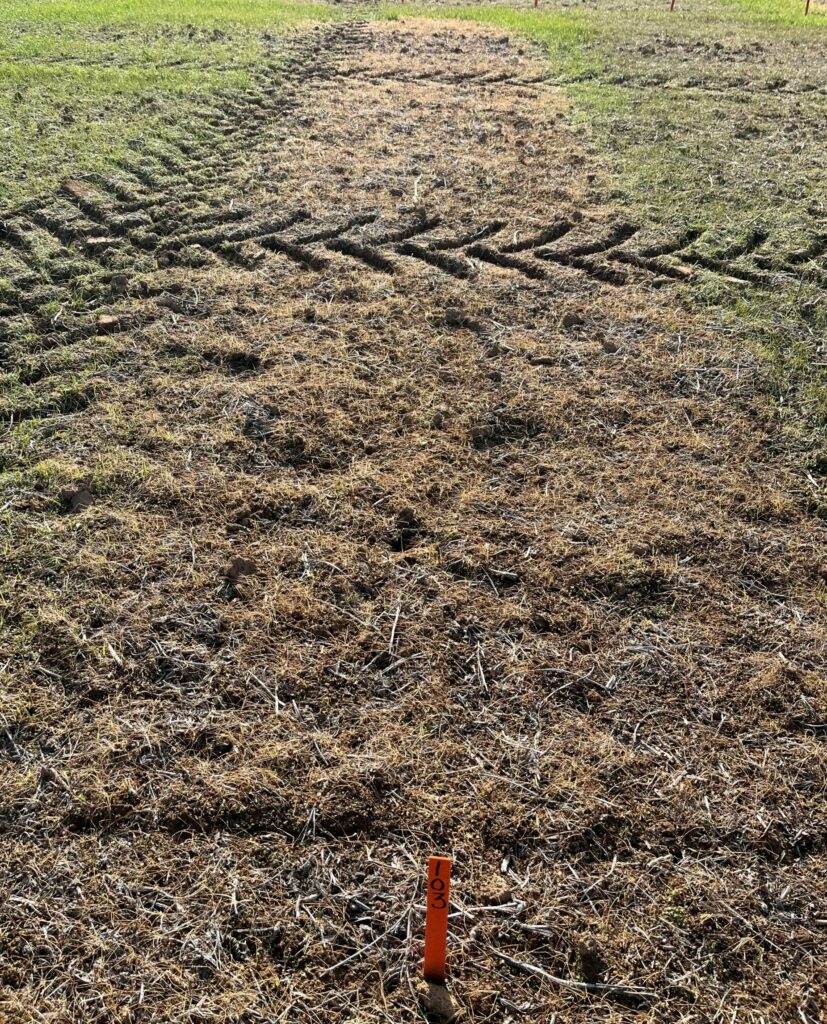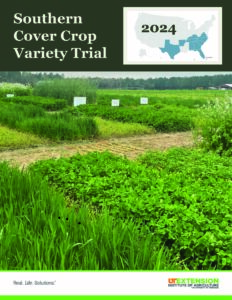Several questions have come in this week regarding longer-term grain storage. Commodity prices for both corn and soy have prompted this question as producers look to 2025 futures. How long grain can be safely stored without a degradation in quality depends on several factors.
Category Archives: Cotton
Soybean Seed Quality Following Hurricane Helene
I want to enter into this conversation with great humility and respect, as many of our neighbors and fellow Tennesseans have suffered great loss in the wake of Helene. As devastating as crop loss and seed damage can be, many have lost much more.
Nevertheless, as we have returned to soybean harvest following hurricane Helene, myself and producers alike are experiencing a severe decline in soybean seed quality. I have heard reports that elevators are rejecting some loads entirely, and of dockages as high as $2 bushel-1 for others. With average yields and commodity prices not where we’d like for them to be in 2024, this is definitely not the finish we were hoping for.
Defoliating the last of our 2024 crop
Here we are, at the end of one of the more challenging seasons we’ve experienced in the past 10 years. Although some have reported disappointing yields, many have been pleasantly surprised and I believe our best crop may just now be beginning to be harvested. Still, margins remain thin. Based on our current temperatures, we have an opportunity to shave a few cents off the budget in our last few defoliation applications. In this blog, I cover some last-minute thoughts on defoliation timing and product selection. Continue reading
Command 24C for Fall Applied Ryegrass Control in Tennessee was Approved
In a previous blog, we referred to recent research that showed fall-applied grass residual herbicides providing good ryegrass control well into the spring. In particular, that research showed that Command, Boundary and the pyroxasulfone based herbicides (Anthem Flex, Zidua) provided the best ryegrass control. Continue reading
Southern Cover Crop Variety Trial – 2024 Results
We have been busy getting corn harvested and cover crops ready for planting over here! As you start thinking about which cover crop species/varieties you’d like to try this year, take a look at the latest data from our Southern Cover Crop Variety Trial. This trial covers a broad region of the Southeast, with sites in TN, KY, AR, NC, SC, VA, AL, GA, FL, and TX.
This year we evaluated 20 varieties, including 1 brassica, 9 cereals, and 10 legumes. These included the following species, with number of varieties evaluate indicated in parentheses: daikon radish (1 ), cereal rye (2 ), oat (6 ), triticale (1), balansa clover (1), berseem clover (1), crimson clover (3), Persian clover (1), red clover (1), common vetch (1), and hairy vetch (1).
Establishment, cover crop cover and weed suppression during the growing season, and biomass, height, nitrogen release, and forage nutritive value at an early spring (pre-corn) and late spring (pre-soybean) evaluation date were evaluated for each entry. Methods used to evaluate and analyze these data and graphs of environmental conditions at each site during the cover crop growing season can be found in the 2024 Southern Cover Crop Variety Trial Report Final pdf version of the report. Result tables are listed in the pdf or as a separate download in excel.
We hope you find this data useful in your search for the best cover crop species/varieties to fit your location and your growing system!
Cotton Tour THIS WEDNESDAY, Sept 11, agenda now available
 The 2024 UT Cotton Tour is NEXT WEDNESDAY, Sept. 11 at the West Tennessee Research and Education Center (605 Airways Blvd, Jackson, TN 38305). Pesticide recertification and CCA points will be available. Tulum will be catering lunch for us.
The 2024 UT Cotton Tour is NEXT WEDNESDAY, Sept. 11 at the West Tennessee Research and Education Center (605 Airways Blvd, Jackson, TN 38305). Pesticide recertification and CCA points will be available. Tulum will be catering lunch for us.
We will be spraying a defoliation demo tomorrow at the experiment station that will be along the tour route. Additionally, we will have presentations from Dr. Sebe Brown on insect control, Dr. Larry Steckel on weed control, Dr. Heather Kelly on diseases, Dr. Avat Shekoofa on irrigation response, and Dr. Nutifafa Adotey on a fertility update. I’m very happy to report the slate of speakers will again include Dr. Jake McNeal, our new Corn and Soybean Specialist who started last spring. He will make a few comments about a few of the research trials he has established at WTREC and some preliminary results from a soybean desiccation study. The agenda for the event can be found by following this link. Look forward to seeing you there!
Ryegrass Control with Fall-Applied Residuals

Ryegrass has become a serous weed issue in some fields the past couple of years. A major reason for this is that much of it is now glyphosate-resistant. Even if clethodim is used rather than glyphosate often it is applied on ryegrass sometime in late March through April when the grass is too well established to provide consistent control. Continue reading
Thoughts on terminating irrigation and defoliating our early acres
I’ve spent the better part of the past three days walking cotton throughout West Tennessee, and while I’m pleasantly surprised by our earliest planted acres, I’m concerned the crop in many areas may fall well-short of what we might have expected at the end of July. In this blog, I briefly share my thoughts on how I would approach terminating irrigation in 2024 and what I believe may be our best first-shot blend for defoliating our earliest acres. Continue reading



